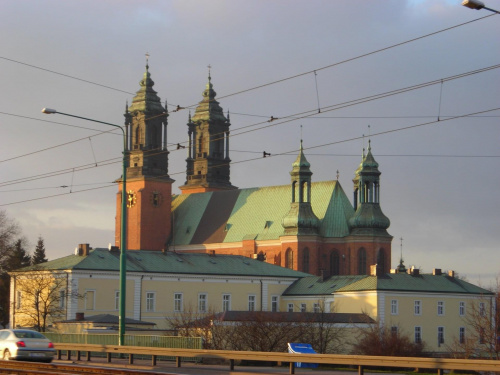Poznan
24 Oct 2008
News / Dealing with constant insults against Polish [323]
Nothing is balck and white. en.wikipedia.org/wiki/Bambrzy

Fountain of Bamberka in a married woman's dress on Old Market in Poznań
Bambrzy (Poznańskie Bambry, German: Posener Bamberger) are the Poles of German origin, the descendants of Germans who moved from the area of Bamberg (Upper Franconia, Germany) to villages surrounding Poznań, Poland.
The Polonisation of this group was a voluntary act and happened very quickly. The settlers refused to build their own churches, prayed with Poles, and their children learned the Polish language. There were also many mixed marriages with Poles living there. At the end of the 19th century, during the Kulturkampf period, all Catholics in villages inhabited by Bambrzy chose Polish nationality during Prussian and German censuses.
Many of them were soldiers of the Polish army fighting in Great Poland Uprising. During the German occupation of Poland most of them, just as most Poles, were persecuted for their Polishness.

The advent of democracy in Poland in 1989 saw the beginning of a renaissance of the Bamber culture. The best-known aspect of this culture are the rich female dresses.
Also Germans living IN Poland REFUSED to assimilate into Poland
Nothing is balck and white. en.wikipedia.org/wiki/Bambrzy

Fountain of Bamberka in a married woman's dress on Old Market in Poznań
Bambrzy (Poznańskie Bambry, German: Posener Bamberger) are the Poles of German origin, the descendants of Germans who moved from the area of Bamberg (Upper Franconia, Germany) to villages surrounding Poznań, Poland.
The Polonisation of this group was a voluntary act and happened very quickly. The settlers refused to build their own churches, prayed with Poles, and their children learned the Polish language. There were also many mixed marriages with Poles living there. At the end of the 19th century, during the Kulturkampf period, all Catholics in villages inhabited by Bambrzy chose Polish nationality during Prussian and German censuses.
Many of them were soldiers of the Polish army fighting in Great Poland Uprising. During the German occupation of Poland most of them, just as most Poles, were persecuted for their Polishness.

The advent of democracy in Poland in 1989 saw the beginning of a renaissance of the Bamber culture. The best-known aspect of this culture are the rich female dresses.
 PolishForums LIVE / Archives [3]
PolishForums LIVE / Archives [3]



